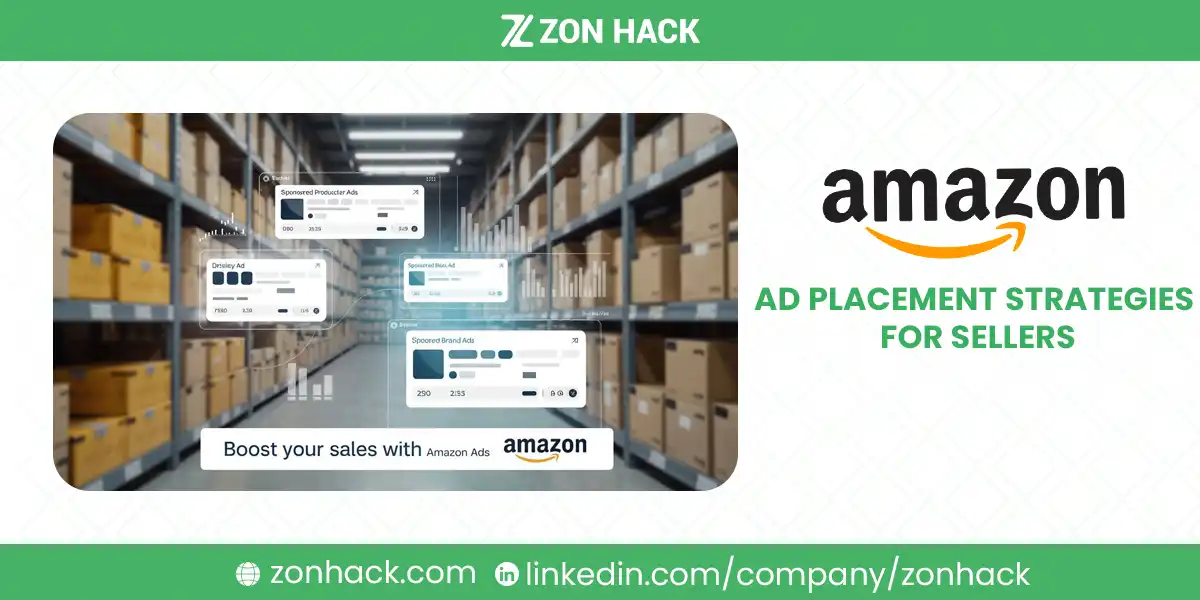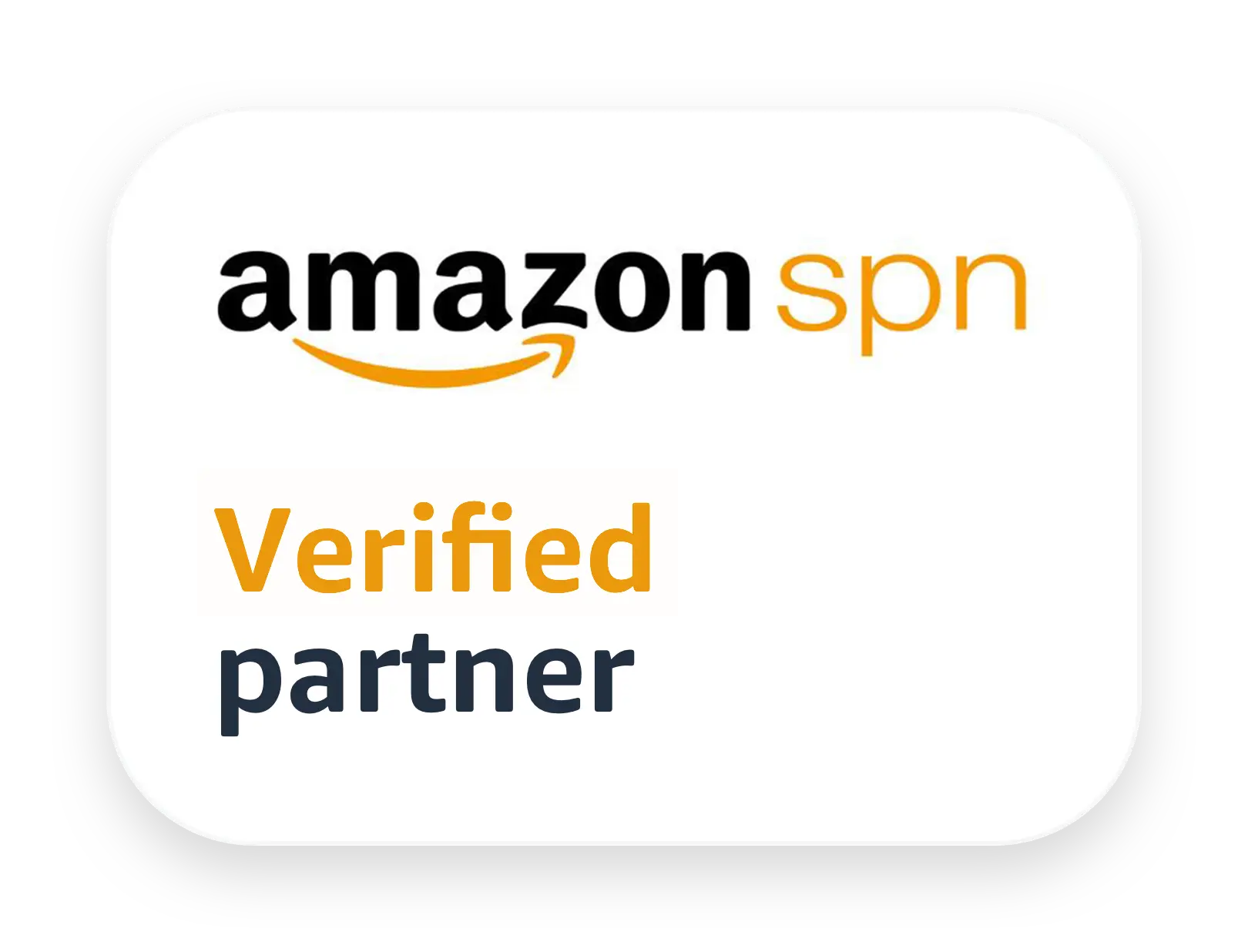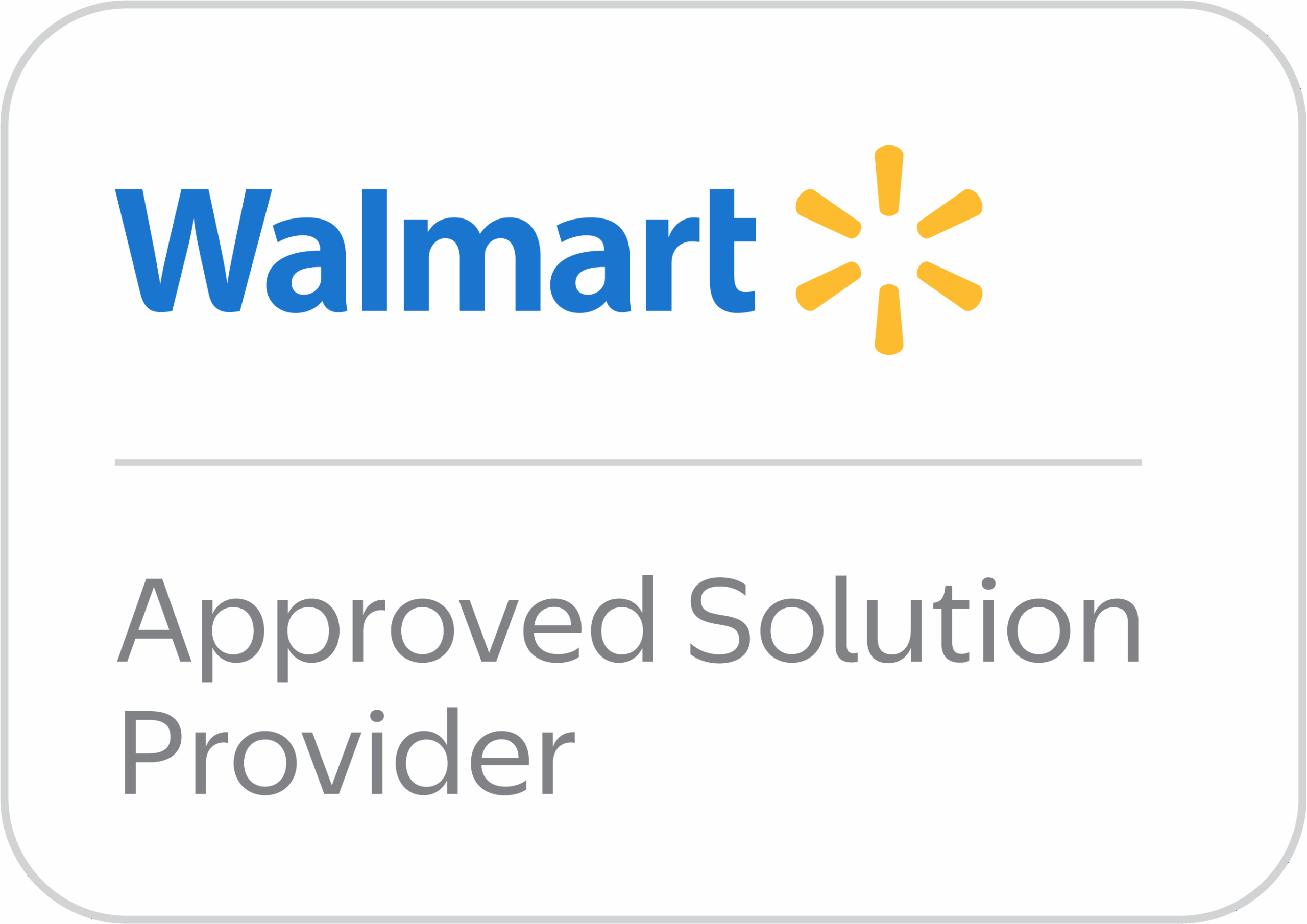Mastering the art of ad placement for higher visibility, better CTRs, and smarter Amazon PPC campaigns
What Is Amazon Ad Placement and Why It’s Important
If you’re running ads on Amazon, where your ads appear is just as important as who sees them.
Amazon ad placement refers to the specific location your ads show up—whether that’s at the top of the search results, on a competitor’s product page, or even on a mobile device outside of Amazon.
Let’s say you’re bidding on the keyword “organic dog treats.” Your ad might appear:
- Right at the top of the search results (prime real estate)
- A few scrolls down (Rest of Search)
- On the detail page of a competing product
Each placement performs differently. Some get more clicks, some get more conversions, and some just drain your ad spend.
Why Ad Placement Strategy Impacts Your PPC Performance
The wrong placement can ruin even the most targeted campaign.
Amazon’s algorithm doesn’t just consider your keywords and bid—it calculates how your ad might perform in a particular spot. That means your budget could go to a low-performing placement if you don’t tell Amazon otherwise.
- Poor placement = low click-through rate (CTR)
- Low CTR = bad Quality Score
- Bad Quality Score = higher costs for less visibility
It’s a chain reaction you don’t want to trigger.
Influence on Visibility, CTR, and Conversion Rates
According to internal Amazon data and studies from tools like Perpetua and Ad Badger:
- Top of Search placements can get CTRs up to 0.7% and CVRs around 13–15%
- Product Detail Page placements may linger longer but often convert less
- Rest of Search tends to have the lowest engagement, but it’s cheaper
So, placement affects everything: how often you’re seen, who clicks, and who buys.
Core Amazon Ad Placement Types (Grouped by Ad Format)
Now let’s unpack where exactly your ads can show up—based on the type of ad you’re running.
Sponsored Products
This is the most popular ad format—and also the most flexible.
- Top of Search (TOS): First few slots of the search results. High visibility. High cost. High conversions.
- Rest of Search (ROS): Ads shown further down the page or on additional pages. Cheaper clicks. Less traffic.
- Product Detail Pages (PDP): Ads shown on a competitor’s product listing page. Good for targeting. Variable performance.
Sponsored Brands
These ads appear as banners and can link to your storefront or multiple ASINs.
- Top of Search Banner: Bold headline and product carousel at the very top of search results.
- Mid or Bottom of Page: These get less attention, but can still support brand visibility.
Sponsored Brands Video
- Mid-search placements: Usually show up in the middle of search results. Eye-catching, especially on mobile.
- Mobile Optimized: These video slots are built for vertical viewing. They stand out.
Amazon reported that video ads can have a CTR up to 7.5x higher than static display ads.
Sponsored Display
This ad type focuses on retargeting and audience-based targeting.
- On-Amazon Placements: Your ad can appear on other product pages, search results, or even the homepage.
- Off-Amazon Placements: Amazon pushes your ad to external sites and apps via its affiliate network.
Amazon DSP (Demand-Side Platform)
Amazon DSP goes beyond self-serve ads. It lets you run programmatic ads across Amazon’s owned and third-party inventory.
That includes:
- Fire TV
- IMDb
- Twitch
- External news, blogs, and apps
If you’re serious about retargeting, DSP is a must.
Placement Performance Comparison (With Benchmarks & Best Use Cases)
Let’s compare how different placements perform using real-world benchmark data.
| Placement Type | Avg. CTR | Avg. CVR | CPC Range | Best Use Cases |
| Top of Search (TOS) | 0.4–0.7% | 13–15% | High | Launching products, brand defense, high-intent terms |
| Rest of Search (ROS) | 0.2–0.3% | 8–10% | Lower | Long-tail keywords, niche products |
| Product Detail Pages | 0.2–0.4% | 6–9% | Medium | Competitor targeting, upsells |
| Sponsored Brands Banner | 0.3–0.6% | 7–11% | Medium-High | Brand awareness, testing creative angles |
| Sponsored Brands Video | 1.5–2.5% | 12–18% | High | Visual products, mobile users, demos |
| Sponsored Display | 0.2–0.4% | 5–8% | Low-Medium | Retargeting, custom audiences |
| Amazon DSP | Variable | 3–8% | High | Broad awareness, lifestyle targeting, remarketing |
Source: Perpetua, Sellics, Ad Badger Benchmarks 2024
Clearly, TOS and video placements bring the strongest performance—but at a cost. PDP and ROS can still be powerful when used strategically.
How to Optimize Your Placement Strategy for Sponsored Products
Adjust Bids by Placement
Amazon gives you the ability to adjust your bids based on placement performance—right inside the ad console.
You’ll see options to increase bids for:
- Top of Search (first page)
- Product pages
If your ad performs better at the top of search, you can set a bid multiplier (e.g., +40%, +80%, +100%) to prioritize it.
Example: If your base bid is $1 and you set +50% for TOS, Amazon can bid up to $1.50 when trying to place your ad at the top.
Amazon recommends starting between 20%–50% for new products and adjusting weekly based on ROAS and ACOS.
Bidding Strategy Alignment
Your placement modifiers should work with your chosen bidding strategy.
- Fixed Bids: Amazon uses your bid exactly as set.
- Dynamic – Down Only: Amazon lowers your bid if a click seems less likely to convert.
- Dynamic – Up & Down: Amazon adjusts your bid based on real-time conversion likelihood.
Pro tip: If you use Dynamic Bidding Up & Down, and also boost TOS by 100%, your ad could bid double or more.
Use with caution—especially if you’re still testing.
Granular Campaign Structuring
Want more control? Use one keyword per campaign.
This allows you to:
- See which placements drive the best performance
- Adjust bids or pause poor performers faster
- Avoid averaging out the data across multiple terms
Many advanced sellers run separate campaigns for TOS and PDP placements—especially for competitive keywords.
When to Pull Back on TOS
Top of Search works—but it can burn through budget if not monitored closely.
Watch for:
- Rising ACOS but flat sales
- Organic rank dropping even as ad spend rises
- TACOS (Total Advertising Cost of Sales) creeping up
These are signs of organic cannibalization—where your paid ads eat into your organic sales.
In these cases, consider:
- Reducing your TOS bid modifier
- Pausing the campaign to let organic ranking breathe
- Reallocating budget to long-tail ROS campaigns
Placement Tactics for Sponsored Brands, Video, and Display
Sponsored Brands: Elevating Brand Awareness with Placement
Sponsored Brands offer a powerful way to showcase your brand and product catalog. Unlike Sponsored Products, these ads are designed for storytelling and brand positioning, not just conversions.
There are three primary formats:
- Product Collection Ads
- Store Spotlight
- Custom Image Ads
Each of these can appear in various placements, but top-of-search banner remains the most coveted. That banner gets immediate visual dominance on desktop and mobile — perfect for branded keywords and competitor targeting.
Lower placements — like middle of the page or footer — are less competitive and often cheaper. These work well when you want more reach without paying premium CPCs.
When to use SB top placements?
- Launching a brand store
- Running A/B tests on creatives
- Targeting branded keywords to block competitors
Sponsored Brands Video: Mid-Page but Maximum Impact
Amazon’s video ad format has changed the game — especially for mobile shoppers.
Where do Sponsored Brand Video ads show? Typically:
- Mid-page on search results
- Product detail pages (limited availability)
Despite the mid-page placement, video ads command more attention. According to Amazon, they have 7.5x higher CTR than display ads. Why? Movement catches the eye. Especially on mobile, video ads break the scroll pattern.
Tips to win with SBV placement:
- Keep videos short — ideally under 30 seconds
- Use captions (many shoppers browse without sound)
- Show the product in action, not just features
- Choose strong custom thumbnails to boost engagement
Use SBV for highly visual products like fitness gear, electronics, kitchen tools — or anything where demonstration > description.
Sponsored Display: Retargeting Meets Placement Precision
Sponsored Display (SD) ads give sellers access to a broader audience with both on-Amazon and off-Amazon placements.
On Amazon, SD ads appear:
- On Product Detail Pages (PDPs)
- In search results
- On homepage placements
Off-Amazon, they extend to:
- Apps
- News sites
- Entertainment platforms within Amazon’s network
Use SD for:
- Retargeting (shoppers who viewed your products but didn’t buy)
- Competitor targeting (appear on rival PDPs)
- In-market audiences (segment targeting)
Placement is driven more by targeting method than by manual selection. You choose audiences or ASINs — and Amazon handles the placement.
Pro tip: SD performs best when layered with cross-device strategies. Mobile placements often have higher impressions, but desktop typically brings higher conversion intent.
Amazon DSP: Premium Placements, Granular Control
Amazon DSP (Demand Side Platform) gives brands access to Amazon and third-party inventory through programmatic placements.
Placements can appear:
- On Amazon devices (Fire TV, Kindle)
- On sites like IMDb, Twitch
- Across external publishers in Amazon’s network
With DSP, you can target:
- Lifestyle segments (e.g., pet lovers, fitness enthusiasts)
- In-market behaviors
- Demographics and income levels
Use DSP when:
- You need deep retargeting
- You want top-of-funnel awareness
- You’re building brand recall across platforms
But note: DSP comes with higher budgets and usually works best for brands spending $10K/month+ on ads.
Analyzing Ad Placement Performance: Metrics, Tools, and Optimization
Know What to Measure
Not all placements are created equal — and not all sellers know how to analyze performance by placement.
Here are key metrics to monitor:
| Metric | Why It Matters |
| CTR | Tells you how engaging your placement is |
| Conversion Rate (CVR) | Shows buying intent of that audience |
| CPC | Tells you how competitive the placement is |
| ACOS | Measures cost vs. revenue |
| TACOS | Measures total sales impact (organic + paid) |
You should also track:
- Impressions (visibility)
- ROAS (return on ad spend)
Accessing Amazon Placement Reports
You can view placement-level reports directly in the Amazon Advertising Console:
- Go to the campaign manager
- Click on a Sponsored Product campaign
- Select “Placements” tab
- Analyze TOS, PDP, and ROS separately
You’ll see bid adjustment data, impressions, CTR, CVR, and cost breakdowns by placement.
Look for:
- High ACOS on TOS = time to reduce top bids
- Strong CVR on PDP = opportunity to scale retargeting
- Low CPC in ROS = test long-tail keywords profitably
Using Third-Party Tools
For deeper analysis, many sellers turn to tools like:
- m19: Advanced automation + bid optimization
- Helium 10 Adtomic: Strong campaign structuring
- Perpetua: Visual dashboards and heatmaps
- Sellics: All-in-one PPC suite
These tools often show placement performance visually, allow automated bid modifiers, and offer alert systems for poor-performing placements.
Optimization Tips
- Adjust bid modifiers weekly, not daily — allow data to accumulate
- Reallocate budget to high-ROI placements instead of guessing
- Use campaign experiments to test placement settings, especially for new products
Strategic Framework for Smart Ad Placement
Align Placements with the Funnel
Amazon ad placements work differently across the buyer journey:
| Funnel Stage | Best Placement |
| Awareness | Top of Search, Sponsored Brands |
| Consideration | PDP, Mid-page Video |
| Decision | Sponsored Display Retargeting |
Use Sponsored Brands and TOS for brand visibility.
Use PDP and ROS for educating and nudging.
Use Display and DSP for retargeting or winning back interest.
Use TACOS to See the Big Picture
A placement might have a high ACOS, but if it’s driving organic rank and overall growth, your TACOS (Total ACOS) might still be improving.
For instance:
- ACOS on TOS: 40%
- But TACOS dropped from 18% to 12%
- That means your organic sales grew, and the placement investment worked
Avoid Overlapping Placements
Running the same keywords across multiple placements and campaigns leads to:
- Budget cannibalization
- Inaccurate data attribution
- Wasted ad spend
Create dedicated campaigns for different placements. For example, isolate:
- TOS-only campaigns
- Product targeting campaigns
- Retargeting display campaigns
Think Product-Specific and Seasonal
Not all placements work for every product.
Example:
- Pet food ads on competitor PDPs = high chance of conversion
- Yoga mat in ROS = great for niche long-tail keywords
During seasonal periods like Prime Day or Q4:
- TOS gets crowded — shift to PDPs or Display
- Video ads can stand out amid deal clutter
Use historical data to plan seasonal shifts in placements.
FAQs & Troubleshooting Placement Issues
How do I know which Amazon ad placement performs best?
Use the placement report in your campaign view. Check CTR, conversion rate, and ACOS across TOS, PDP, and ROS. If TOS has high impressions but low CVR, consider scaling back.
Why is my Top of Search bid not showing results?
Could be due to:
- Low relevance score
- High competition
- Budget running out early
Try increasing your bid by 20–40%, optimizing your listing, and checking Search Term reports.
Can I control placement in Sponsored Display?
Not manually. Amazon chooses the placement based on your targeting. However, you can control audience type (e.g., views remarketing vs. product targeting) which indirectly influences placement.
What’s the cheapest Amazon ad placement?
Rest of Search (ROS) usually has the lowest CPC, but also lower intent. Best for long-tail, niche keywords.
How to use placement for launching new products?
Use Top of Search aggressively, combined with video ads and display retargeting. Make sure your product detail page is fully optimized with strong imagery and reviews.
Bottom Line: Master Placement to Master Profitability
Amazon ad placement isn’t just a setting — it’s a performance lever. Sellers who understand where their ads show, how to adjust bids, and when to scale or pull back will outperform those who blindly optimize keywords.
At ZonHack, we help Amazon brands not only optimize their campaigns but engineer entire placement strategies tailored to funnel stages, product types, and seasonal shifts.
Need help mastering Amazon placements, bid strategies, and ACOS control? Reach out to ZonHack for a free audit.




